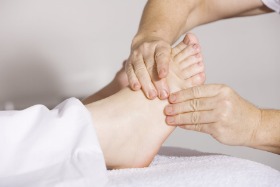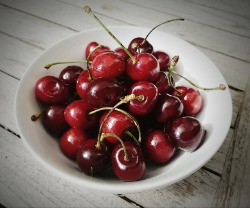Rheumatoid arthritis: Five ways to ease pain and symptoms in the knee, hip and hands
Published Apr 12, 2018

RHEUMATOID arthritis is a condition that causes swelling and stiffness in the joints, particularly in the knee, hip and hands. Here are five natural treatment methods you can use to try ease the pain.
 Rheumatoid arthritis can cause problems in any joint in the body, but small joints in the hands and feet are often the first to be affected.
Rheumatoid arthritis can cause problems in any joint in the body, but small joints in the hands and feet are often the first to be affected.
Pain, stiffness, swelling, warmth and redness are the main symptoms, but additional symptoms can include tiredness and a lack of energy, a high temperature, sweating, a poor appetite and weight loss.
Unfortunately there is no cure for rheumatoid arthritis, but treatment can help reduce inflammation
A group of experts have listed the best natural ways to aid your arthritis, from a change in your diet to hot and cold therapy.
High fibre diet
Researchers have now discovered that a diet rich in fibre can have a positive influence on arthritis, which can lead to stronger bones and joints.
Alix Woods, Nutritionist at Quest Nutra Pharma, said: "Having a high fibre diet supports healthy digestion and the absorption of nutrients, which is essential for optimum bone health. Through the process of digestion, dietary fibre ‘feeds’ the intestinal bacteria and it produces specific short-chained fatty acids. These by-products result from the fermentation of fibres from healthy whole foods."
“They have an anti-inflammatory effect on the whole body and are found in joint fluid and bone cells, which contributes to healthy bones and joints. This particular bacteria is essential for the absorption of the bone building vitamins and minerals like, calcium, magnesium and Vitamin D. It’s therefore essential to have a fibre rich diet to maintain overall bone mass and health."
“High fibre foods include dark leafy green vegetables, grains like oats, brown rice, barley, and quinoa, and seeds like sesame, pumpkin, pine and sunflower. Try roasting the seeds and sprinkle liberally over warming soups or grilled vegetables. "
Alex added: “Remember to keep skins on fruits and vegetables for added fibre - especially when having a baked potato or a fruit snack like an apple or pear. Nuts like pecans, walnuts, almonds and pistachios provide quick and easy snacks while on the run, which are also rich in fibre.”
Don't stop exercising
Regular exercise, especially during the winter when our joints can seize up in the cold weather, is really important. Exercise can help keep your joints supple and may even help reduce some of the pain.
Try aerobic exercises such as Pilates, swimming or cycling. Swimming can be especially effective; as the buoyancy of the water will help support the joints as you exercise. If you need a little extra help, try taking a supplement such as Glucosamine from Quest Nutra Pharma, which helps to support joint health and improve mobility. But, if you are in considerable pain after exercising it may be worth making an appointment with your GP to discuss a course of action.
Anti-oxidants are key
 A lot of joint pain and stiffness is caused by inflammation around the joint tissue, so it is important to include lots of anti-oxidants in your diet that can help to flush out any nasty toxins from your system.
A lot of joint pain and stiffness is caused by inflammation around the joint tissue, so it is important to include lots of anti-oxidants in your diet that can help to flush out any nasty toxins from your system.
Dr Marilyn Glenville, the UK’s leading Nutritionist and author of The Natural Health Bible for Women, said: “Eat plenty of cherries, blueberries, blackberries, cranberries, beetroots, as well as carrots, sweet potatoes and tomatoes.”
Nutritionist Cassandra Barns added: “You can also try taking a curcumin supplement such as Natures Plus Source of Life Garden Curcumin which contains the anti-inflammatory properties found in turmeric, and helps combat against inflammation.”
Hot and cold therapy
Using simple hot and cold therapy can help to manage the pain and stiffness you experience in your joints. Having a hot bath or long shower, especially in the morning, can help to ease the stiffness in your joints. For a cold treatment, wrap a gel ice pack in a towel and apply it to painful joints for a quick and natural pain relief.
Boost your immunity
Nutritionist Cassandra said: “Some types of arthritis such as rheumatoid are autoimmune conditions, meaning the body mistakenly attacks its own joint tissue. It is therefore important to make sure you’re getting enough Vitamin D, which is vital for supporting a healthy immune system.”
Make sure you’re eating plenty of foods rich in vitamin D such as fish, milk, fortified cereals and eggs or for extra help try taking a supplement such as Quest Nutra Pharma’s Forte D 4000.
Express.Co.Uk

 Facebook
Facebook Twitter
Twitter


